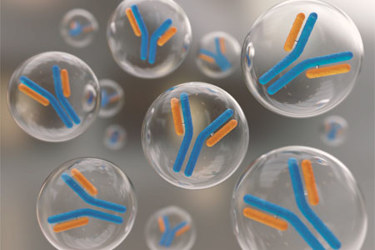Scientific Poster: Development Of Relative Potency Assay For ADC Using Multiple Kinetic Assays Before Finalizing Endpoint Readout
By Gabi Rivera, Jacob Barretto, Alena Nikolskaya, and Michael Buonarati

Discover a comprehensive and innovative strategy for evaluating the potency of antibody-drug conjugates (ADCs), developed under the leadership of Alena Nikolskaya, Associate Director of Analytical Methods Development at Abzena. This approach seamlessly integrates three essential components — real-time apoptosis tracking, secondary necrosis measurement, and an optimized final viability read — into a unified workflow. By combining luminescent Annexin V assays, which monitor early apoptotic events, with fluorescent DNA-binding assays for detecting membrane-compromised cells, and culminating in a CellTiter-Glo® endpoint, the method offers a significantly deeper understanding of ADC-induced cytotoxicity than traditional endpoint-only assays.
Key advantages of this methodology include the ability to capture multiple kinetic readouts in real time, enhancing the detection of nuanced effects from ADC treatment. It also improves assay precision through careful optimization of variables like cell density and dose response, enabling better discrimination of subtle potency differences. The streamlined workflow ensures that real-time measurements do not interfere with the final viability readout, preserving data integrity. By leveraging both luminescent and fluorescent signals, the assay enhances sensitivity and confidently distinguishes ADC-driven apoptosis from other cytotoxic mechanisms. This multi-step approach delivers a robust, highly informative evaluation of ADC relative potency and identifies the optimal window for endpoint measurement.
To explore how this methodology can accelerate your ADC development, connect with the experts at Abzena.
Get unlimited access to:
Enter your credentials below to log in. Not yet a member of Bioprocess Online? Subscribe today.
